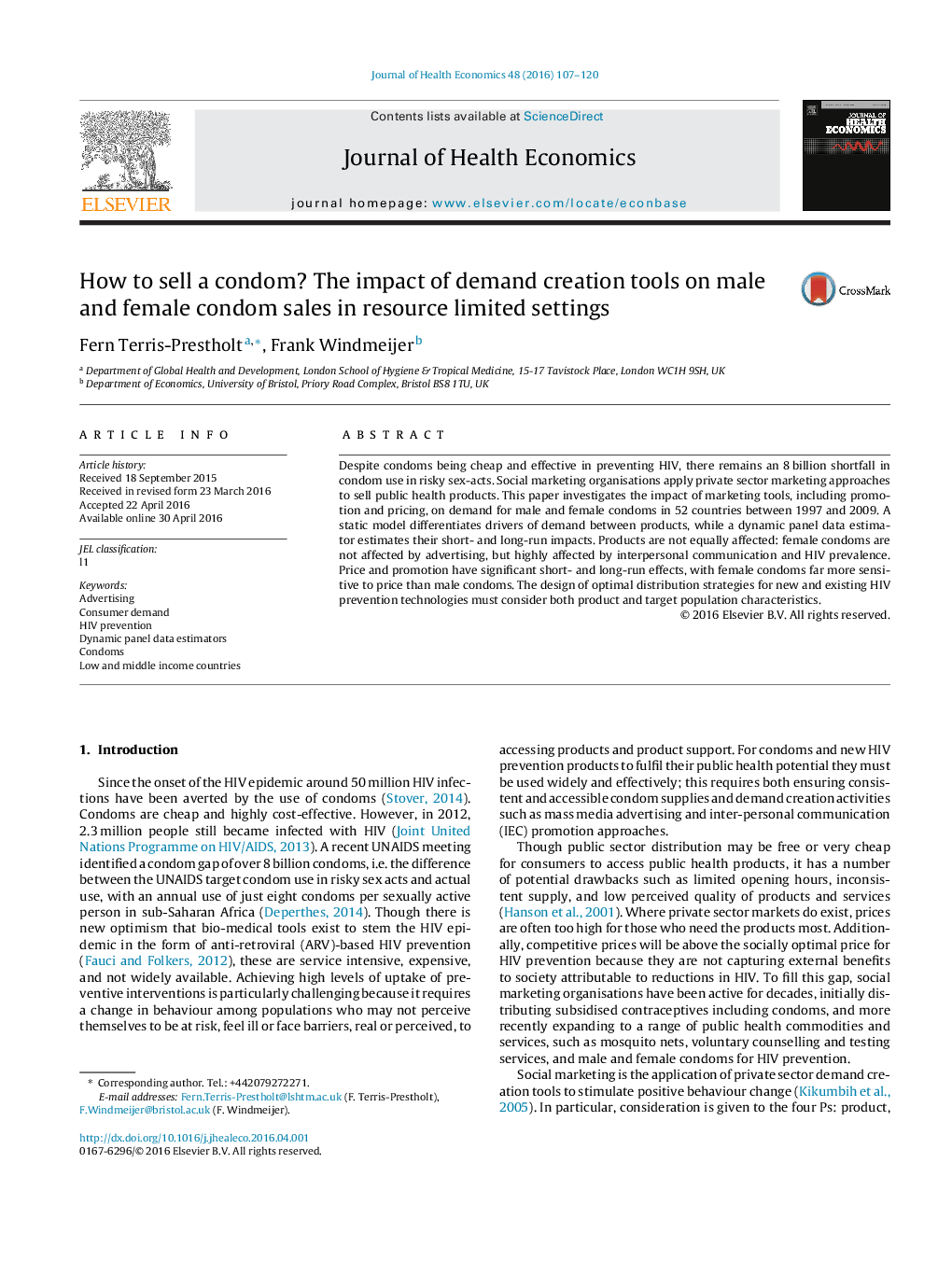| Article ID | Journal | Published Year | Pages | File Type |
|---|---|---|---|---|
| 7363178 | Journal of Health Economics | 2016 | 14 Pages |
Abstract
Despite condoms being cheap and effective in preventing HIV, there remains an 8Â billion shortfall in condom use in risky sex-acts. Social marketing organisations apply private sector marketing approaches to sell public health products. This paper investigates the impact of marketing tools, including promotion and pricing, on demand for male and female condoms in 52 countries between 1997 and 2009. A static model differentiates drivers of demand between products, while a dynamic panel data estimator estimates their short- and long-run impacts. Products are not equally affected: female condoms are not affected by advertising, but highly affected by interpersonal communication and HIV prevalence. Price and promotion have significant short- and long-run effects, with female condoms far more sensitive to price than male condoms. The design of optimal distribution strategies for new and existing HIV prevention technologies must consider both product and target population characteristics.
Related Topics
Health Sciences
Medicine and Dentistry
Public Health and Health Policy
Authors
Fern Terris-Prestholt, Frank Windmeijer,
